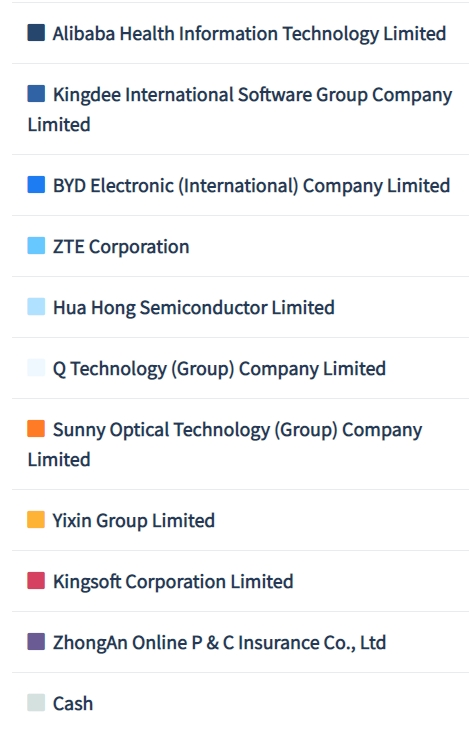The Hang Seng Tech Index was launched on the 27 July 2020.
It introduces a new way for an investor to gain ownership of 30 technology companies listed in the Hang Seng, with the largest market capitalisation. While the index is relatively new, component companies have been around for some time. Hence, a retail investor can explore the index components and see what kind of strategy works with Hong Kong Technology stocks.
tl;dr: the top 3 metrics from the back-test results were: Lower Profit Margins, High Volatility, High Profit Growth. But before you jump in, I share safer and better ways to gain exposure to HK tech companies in my analysis below.
Why Back-test?
In this article, I explore the use of several investing factors to pick a subset of Hong Kong Technology stocks that could be worth investing.
I do not have Doctor Strange’s ability to travel to the future, but I do have access to the next best option, a backtesting tool. To run this test, I’m using Pyinvesting.com.
This tool allows users to generate a universe of stocks and back-test a subset of stocks. The idea is to test if investment performance improves when we pick stocks using a superior metric such a high-profit margin or a low price to earnings ratio.
For example, in the universe of 30 HK Tech stocks, I can compare the performance of 10 stocks with lowest PE ratio versus that of 10 stocks with highest PE ratio and see if there is a significant difference in returns and downside risk.
If high PE stocks outperform, it may be a hint that selecting top PE tech stocks can result in outperformance in the future.
Previously, I would have to book a 1-hour slot at the Lee Kong Chian Library to gain access to a Bloomberg terminal, in order to perform a back-test like this.
Now I can do this from the comfort of my own home.
7 Key Metrics were tested
In this exercise, I perform the following back-tests with the following conditions:
- Back-test duration is for 1-year and 3-years. As these are tech stocks, it may not be meaningful to back-test further than three years.
- We chose ten-stock subsets for each back-test. i.e. Ten stocks with the highest profit margin are tested against ten stocks with the lowest profit margin.
- We measure returns and downside risk represented by semi-deviation. The Sortino ratio (ratio of gains to downside risk) was used to measure the effectiveness of a strategy; the higher the ration, the better.
We picked 7 factors to test. Each of them representing a common investing strategy:
- PE ratio as a proxy for the value investing strategy
- Market Capitalisation as a proxy for size
- Profit Margin as a proxy for profitability
- Dividend Yield as a proxy for pay-outs
- Volatility as a proxy for itself
- Profit growth as a proxy for the growth strategy
- 30-Day relative strength indicator (RSI) for the momentum strategy
We carry up to sixteen consecutive back-tests to generate the table, as shown below:
| 1-year return | 1-year semi-deviation | Sortino Ratio | 3-year return | 3-year semi-deviation | Sortino Ratio | Average Sortino | |
| Baseline | 83.5% | 25.3% | 3.2 | 24.2% | 18.6% | 1.3 | 2.3 |
| High Market Cap | 157.4% | 29.9% | 5.3 | 19.4% | 25.6% | 0.8 | 3.0 |
| Low Market Cap | 108.7% | 29.9% | 3.6 | 34.0% | 26.3% | 1.3 | 2.5 |
| Low PE | 135.5% | 29.8% | 4.5 | 22.5% | 25.6% | 0.9 | 2.7 |
| High PE | 104.8% | 27.6% | 3.8 | 28.3% | 25.5% | 1.1 | 2.5 |
| Low Margin | 130.8% | 28.1% | 4.7 | 35.2% | 25.2% | 1.4 | 3.0 |
| High Margin | 118.6% | 29.4% | 4 | 23.4% | 25.9% | 0.9 | 2.5 |
| Low Dividend Yield | 113.1% | 29.1% | 3.9 | 26.6% | 26.1% | 1 | 2.5 |
| High Dividend Yield | 107.6% | 30.2% | 3.6 | 25.2% | 25.2% | 1 | 2.3 |
| Low Volatility | 97.3% | 29.1% | 3.3 | 29.8% | 24.4% | 1.2 | 2.3 |
| High Volatility | 151.4% | 30.1% | 5 | 28.6% | 27.1% | 1.1 | 3.0 |
| Low Profit Growth | 109% | 28.6% | 3.8 | 33.7% | 25.7% | 1.3 | 2.6 |
| High Profit Growth | 148% | 29.7% | 5 | 34.6% | 29.4% | 1.2 | 3.1 |
| Low 30-Day RSI | 150.6% | 29.2% | 5.2 | 33.2% | 25.2% | 1.3 | 3.2 |
| High 30-Day RSI | 62.5% | 32.3% | 1.9 | 21.1% | 27.2% | 0.8 | 1.4 |
| Low Margin, High Profit Growth, High volatility | 138.4% | 31.4% | 4.4 | 31.4% | 27.2% | 1.2 | 2.8 |
What works for the Hong Kong Tech Index?
From the back-test results, we can conclude the following:
- Don’t choose tech stocks based on market cap.
Choosing tech stocks based on market capitalisation creates inconsistent results. Large tech stocks do better over the previous year but underperformance when stretched over three years. - Low price to earning ratios are only indicative of short term performance.
Picking cheap Tech stocks based on low price-earnings ratio worked over the past year but did not significantly outperform over the past three years. - Tech stocks with low-profit margins are surprising outperformers.
Selecting tech stocks with low-profit margins significantly outperform tech stocks with high-profit margins! - Don’t choose tech stocks based on dividend yield.
If you have chosen tech stocks based on dividends given out, you would have underperformed tech stocks that retained its earnings. - Higher volatility won.
Tech stocks with higher volatility outperformed those with lower volatility. - Higher profit growth won.
Tech stocks with a higher profit growth outperformed those with smaller profit growth. - Don’t waste time using short-term momentum measurements
Employing short-term momentum measurements to select tech stocks do not result in outperformance.
Pyinvesting.com also allows an investor to blend different factors to refine your portfolio selection technique.

If we can look for tech stocks with low-profit margin but growing raw profit figures, and then pick the those with the highest volatility, we can generate a multi-factor strategy to attain returns that are better than the baseline index.
However, the superior performances of such an approach come at a much higher downside risk and provide little psychological comfort for the investor.
From this simple exercise, it is clear that employing a strictly quantitative strategy to sift out Hong Kong Technology Stocks is not a good idea. A value-factor like Low P/E ratio can outperform in one time period and yet underperform in another.
Furthermore, some aspects of outperformance cannot be explained by conventional finance – for example: why do companies with a low-profit margin outperform over both back-tested periods but profit growth as a strategy remains viable?
Cherry-picking the Hong Kong Tech Index for outperformance, thus, requires a much higher level of skill.
The investor would need to have an intuitive grasp of market psychology and analyse the stocks from the ground up. This requires understanding the business the stock is in, knowing who it is competing against, and having knowledge of the socio-political forces that can affect the business. Following the narrative and glamour of a technology company is inevitable if outperformance is your aim.
Conclusion
In summary, the top 3 metrics from my back test were:
- Lower Profit Margins
- High Volatility
- High Profit Growth
To be honest, I am somewhat disappointed at the back-tests results.
It confirms the unsuitability of Hong Kong Tech Stocks for the typical Early Retirement Masterclass (ERM) student who prefers investing in assets that are cheap and produce a steady stream of cash to meet regular spending needs.
Our competence and strengths remain in the local markets where value-based factor investing strategies continue to hold sway.
With that said, you should not avoid investments in technology stocks.
Rather, if you wish to gain exposure to Hong Kong Technology sector, it may be more worthwhile to either consider purchasing all 30 stocks in equal weights, or buy an ETF the moment it becomes available.

